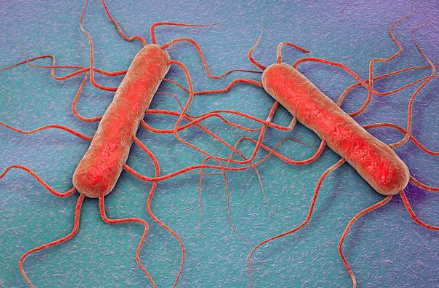HONOLULU (KHON2) — Listeria has been making headlines in Hawaiʻi this week with at least one person dead after coming into contact with it. But what is it?
Listeria is a kind of germ (bacteria) that can get into food, and it can make people really sick.
The resultant illness caused by it is called listeriosis; while it is rare, it can be very serious and can spread when someone eats food contaminated with Listeria.
The bacteria can live in soil, water and animal poop, and it can get on vegetables and fruits. It can also be in foods like deli meats (cold cuts), hot dogs, unpasteurized (raw) milk and soft cheeses.
Who is most at risk?
Some people are more likely to get very sick from Listeria than others. Those most susceptible include:
- Women who are pregnant.
- Babies (newborns).
- Older adults who are age 65 and older.
- People whose immune systems are weak (for example, from illness or medicine).
If one of these people eats food with Listeria, the germ can spread through the body and cause serious problems.
What are the symptoms?
Symptoms can start quickly or take weeks; so, you don’t always know that you’ve contracted listeriosis.
Many times, the presenting symptoms look like the flu: fever, muscle aches, tiredness. Sometimes there’s upset stomach, diarrhea and vomiting.
In more serious cases, people may get headaches, stiff neck and/or confusion.
For pregnant women, the illness might look mild; but the baby may be very badly affected, even causing stillbirth or serious illness.
How can you prevent getting it?
Here are steps you can take. This guide is especially important if you or someone you cook for is in a high-risk group:
- Clean: Wash hands with soap and water before and after preparing food. Clean cutting boards, utensils and kitchen counters.
- Separate: Keep raw meat, poultry and seafood away from ready-to-eat foods like salads or cheese. Use separate cutting boards, if possible.
- Cook thoroughly: Make sure foods are cooked to safe temperatures so germs are killed.
- Chill and store properly: Keep your refrigerator at 40 °F (4 °C) or below. Clean your fridge and throw out foods that spoil. The bacteria can grow even at fridge temperatures if the fridge is too warm or the food is stored too long.
- Avoid certain risky foods when you are in a high-risk group: raw (unpasteurized) milk, soft cheeses made from raw milk, deli meats unless reheated until steaming hot, refrigerated smoked seafood unless cooked and raw sprouts.
By following these steps — cleaning, separating, cooking well, chilling foods properly and avoiding the riskiest foods — you reduce your chances of getting listeriosis a lot.
You can click here and here for the Centers for Disease Control and Prevention’s (CDC) “About Listeria Infection” and “Preventing Listeria Infection” pages.
You can also access the U.S. Food and Drug Administration’s (FDA): “Listeria (Listeriosis)” page by click here.
Finally, click here for the U.S. Department of Agriculture’s (USDA) Food Safety and Inspection Service for “Listeria Questions and Answers”.
All the tips provided for preventing listeria contamination can be applied to everyday life and prevention of other bacterial infections as well.
